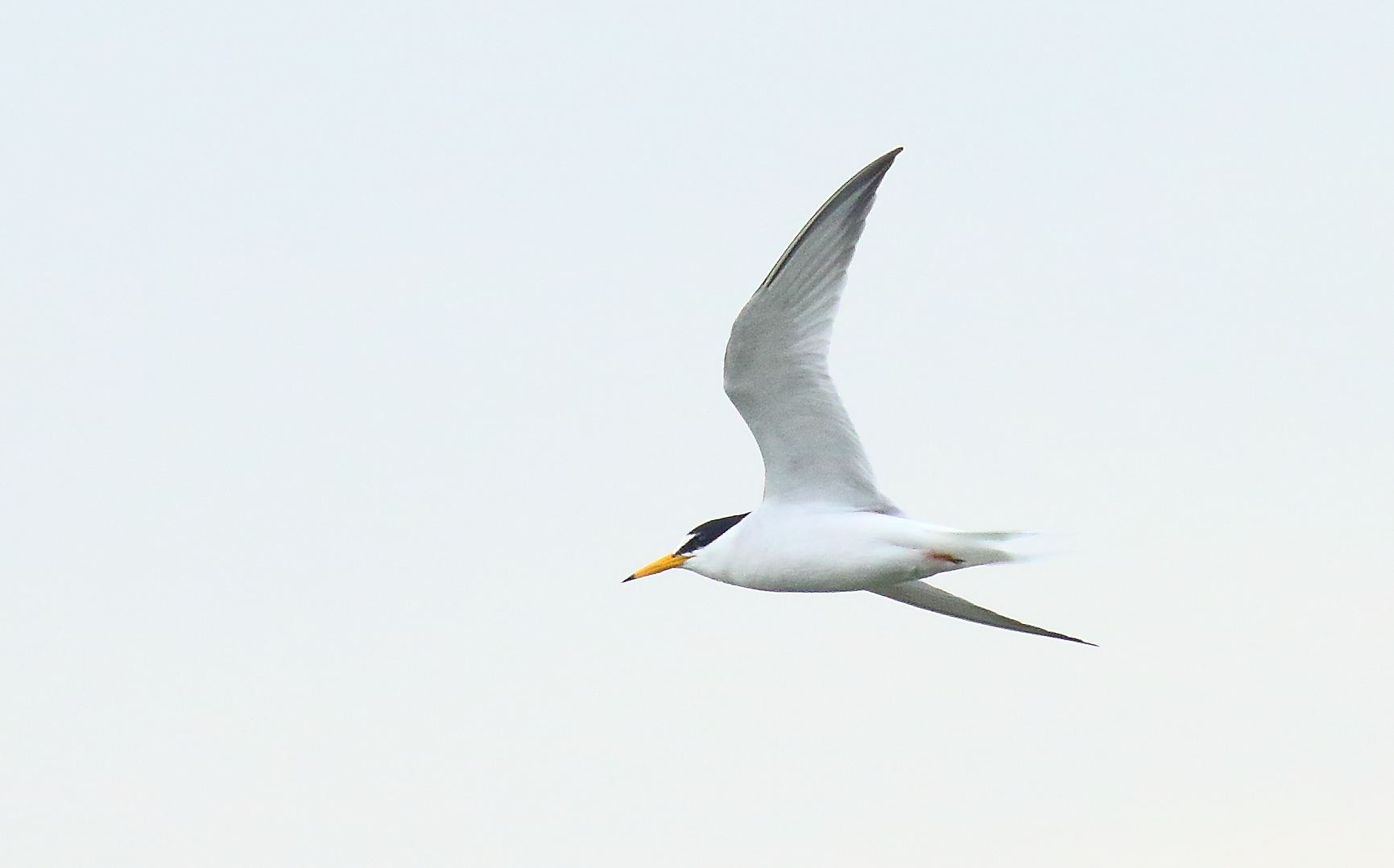
Little Tern ©Kenneth Lam
Common name:Little Tern
Scientific name: Sternula albifrons
Local names: Малая крачка(Russian), Хурган хараалай(Mongolian), 白额燕鸥 (Simplified Chinese), 白額燕鷗/小燕鷗 (traditional Chinese), 쇠제비갈매기 (Korean), コアジサシ(Japanese), Dara laut kecil (Indonesian), Camar Kecil (Malayu), Nhàn nhỏ (Vietnamese), นกนางนวลแกลบเล็ก (Thai).
Conservation status: IUCN - Least Concern
The Little Tern is one of the smallest tern species in EAA Flyway. It has wide distribution range across the East Asian-Australasian Flyway and the East Atlantic Flyway. Five subspecies recognized: Sternula albifrons albifrons; Sternula albifrons innominate; Sternula albifrons guineae; Sternula albifrons sinensis and Sternula albifrons placens, with the later two subspecies S. a. sinensis and S. a. placens found within the EAA Flyway.
Identification
- Size: 22–28 cm; wingspan 47–55 cm.
- Body: slender light grey wings and body, with a white rump, tail long and forked
- Breeding plumage
- Head: distinctive white forehead, black cap and lores.
- Beak: bright yellow beak with a small black tip
- Orange-yellow legs
- Non-breeding Plumage
- Head: forehead is more predominantly white
- Beak: blackish beak
- Dull orange to blackish legs
- Juveniles appear like the non-breeding adults, except for a narrower black rear crown, and a more brownish-white forehead and crown. They have a U-shaped marking which is visible on the shoulders
Little Terns can be confused with Fairy Terns (Sternula neresis), Saunder's Terns (Sternula saundersi), Least Terns (Sternula antillarum), Yellow-billed Terns (Sternula superciliaris), and Peruvian Terns (Sternula lorata).
Distribution range
-
Sternula albifrons sinensis:
Palaearctic breeders in southeastern Siberia, Korea Penisular, Japan and China migrate south in the non-breeding season, mainly in the tropical region, but could reach down to New Guinea and Australia. Some are also found all year round in northern India and Sri Lanka east to southeastern Asia, the Philippines, and northern Australia.
-
Sternula albifrons placens:
East Australia and East Tasmania
Habitat
-
Breeding habitat
Little Tern breeds on sand spits, banks, ridges or islets, and sandy beaches in coastal environments including coastal lakes, estuaries and inlets. The nest is a shallow scrape positioned on the ground above the high tide-line and often only a few meters away from shallow clear water where it lays one to three eggs a clutch.
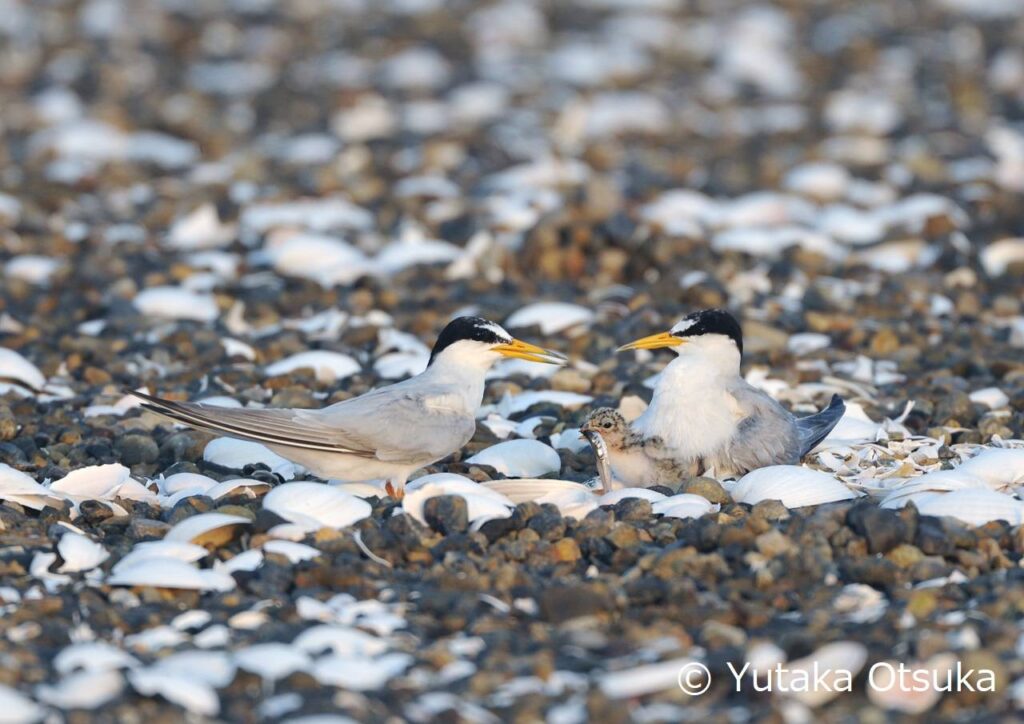
Breeding habitat of Little Tern © Yutaka Otsuka
-
Non-breeding habitat
Coastal tidal creeks, lagoons and saltpans; sometimes feed in the open sea.
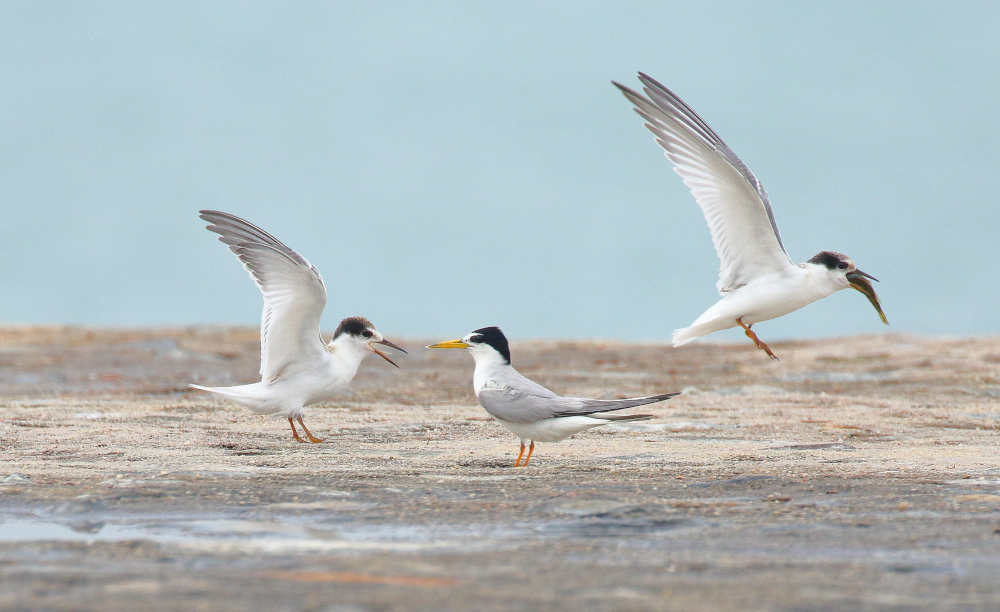
Non-breeding site in Singapore ©Kenneth Lam
Behavior
Little Terns is a ground-nesting bird and it nests in small loose colonies., with the distance between nests usually more than 2m. Breeding colonies are small to medium-sized, up to 40 pairs, seldom > 100 pairs. Little Tern shows moderately high site fidelity. Courtship occurs by presenting and feeding the females with fish and may last from a few days to weeks.
Population estimate
The global population is estimated to number c.190,000-410,000 individuals. There is no accurate census date for subspecies S.a. sinensis but estimated to 10,000 – 100,000 birds, while S. a. placens is estimated to have 10,000 birds.
Main threats
- Habitat loss by reclamation
- Human disturbance, e.g. recreational and tourism activities at coastal areas close to breeding colonies
- Stray or feral dogs and cats at breeding sites.
Other threats:
- Pollution
- Egg collection
- Artificially-induced water-level fluctuation
- Sand-mining
Natural threats:
- Flooding
- Adverse weather conditions, e.g. typhoons, heavy rains, strong winds and waves
- Natural predators (e.g. Peregrine Falcon, snakes, rats)
Conservation Work
Artificial breeding habitat on building rooftop in Tokyo, Japan to restore Little Tern breeding colony
Since 2001, a new NGO Little Tern Project has been established to manage the initiative of building artificial breeding habitats on the rooftop of buildings in Tokyo Bay, Japan. This sustained over 2000 nests, although the population fluctuate due to various factors. The project also integrates with local community engagement and citizen science. Conservation of Little Tern is also part of local policy, e.g. Basic Environmental Plan of Ota City.
Learn more: https://littletern.net/
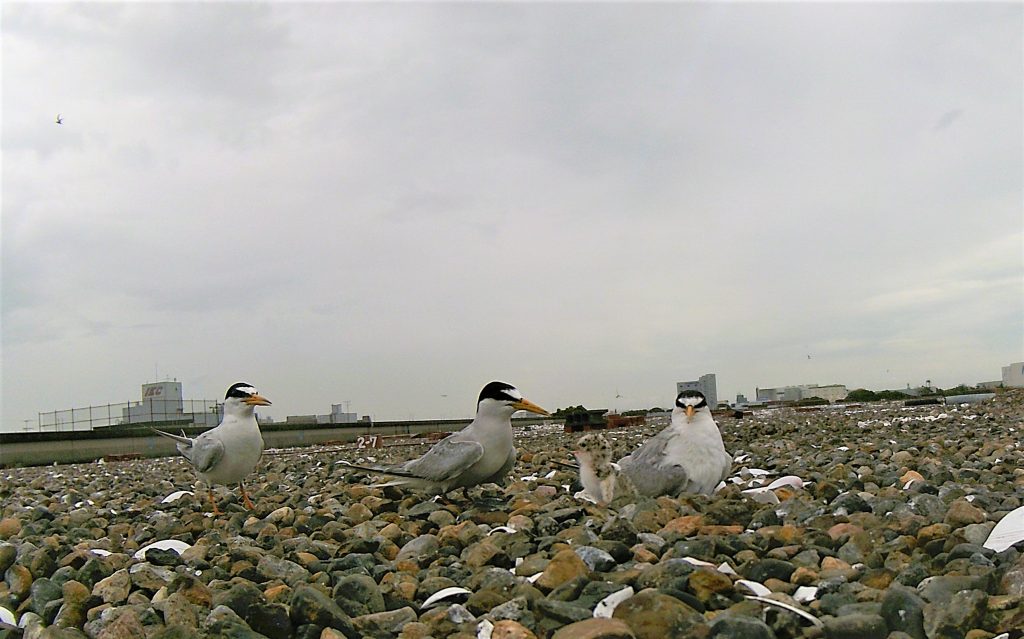
Little Tern breeding at Morigasaki Water Reclamation Center of Tokyo © Little Tern Project
Tracking and studies on migratory routes of Little Tern
There are independent or internationally collaborative banding and tracking projects on Little Tern. Banding and colour-marking have been done in Australia by New South Wales (NSW) National Park and Wildlife Services (2003). In Japan, Yamashina Institute of Ornithology, Japanese Society for Preservation of Birds and Little Tern Project had banding and banding programme, and utilize of geo-locators. Japan had a collaborative project with Australia between 2012-2015 (link).
In Guangdong, China, a joint research carried out by Little Tern Project, Hong Kong Bird Watching Society, Guangdong Haifeng Bird Provincial Nature Reserve Office, and Sun Yat-sen University has done colour-marking on Little Terns in 2017 and 2018. A yellow ring with a white engraving of A and 2 numerals had been placed on the right tarsus, as shown in the photo below (Yu, pers. comms.). However, further surveys in 2018 could not find any colour-marked Little Tern at this site.
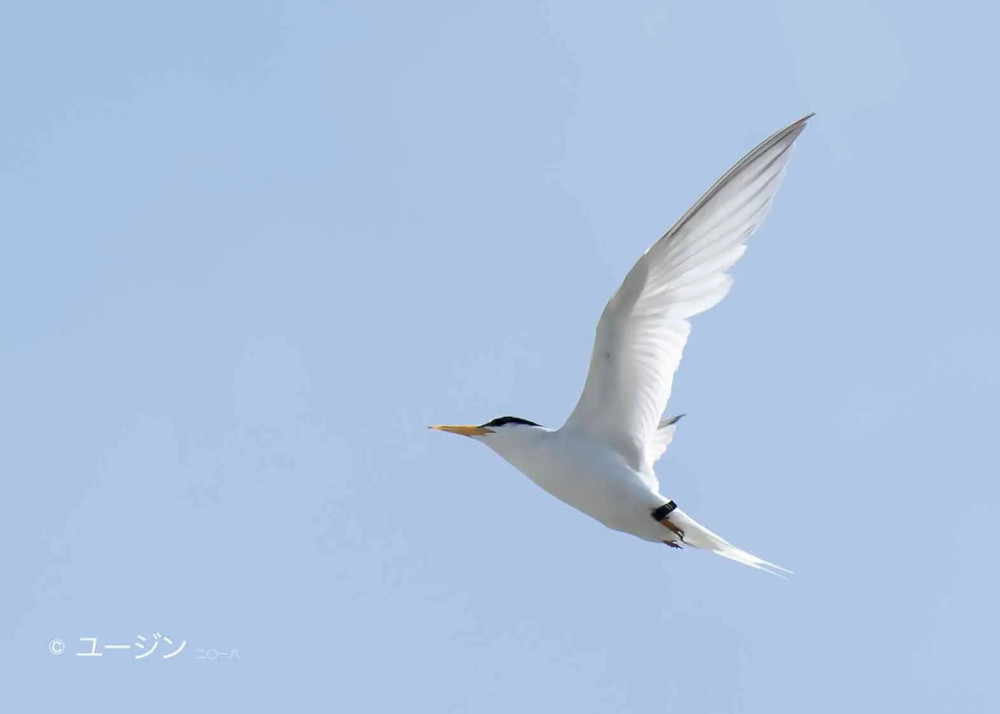
A Little Tern with geolocator ©Eugene Cheah
Little Tern Recovery Plan in New South Wales, Australia
The Little Tern is listed as Endangered in New South Wales of Australia under the Threatened Species Conservation Act 1995 (TSC Act). This Recovery Plan was launched in 2003, which constitutes the approved NSW State Recovery Plan for the Little Tern. It covers conservation requirements of the species across and identifies conservation actions to be undertaken to ensure the long-term survivorship of the species.
Learn more: link
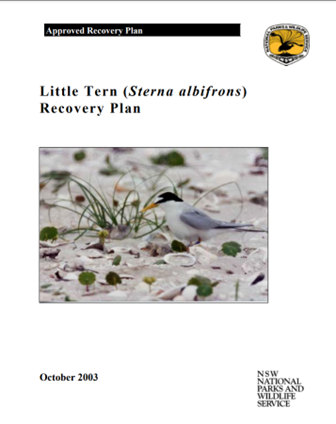 © New South Wales Government
© New South Wales Government
Fun Fact
- A Little Tern in Australia had been recorded to reach 17 years old. Generally, Little Terns start breeding from 3 years old, occasionally at 2 years old.
- Regarding species looks similar to the Little Tern, while Fairy Tern might turn up in Indonesia and Saunders’s Tern in western SE Asia, Yellow-billed Tern and Peruvian Tern are highly unlikely to be found in EAAF countries. The most frequent confusion is with the Least Tern. It is an uncommon but regular visitor to Japan (first confirmed record was a banded bird from North Dekota, USA recovered at the coast of Ibaraki Prefecture, Japan in July 2014) and probably can occasionally be found in eastern Asia.
References
- IUCN Red List: https://www.iucnredlist.org/species/22694656/155476219
- Birds of the World: https://birdsoftheworld.org/bow/species/litter1/cur/introduction

